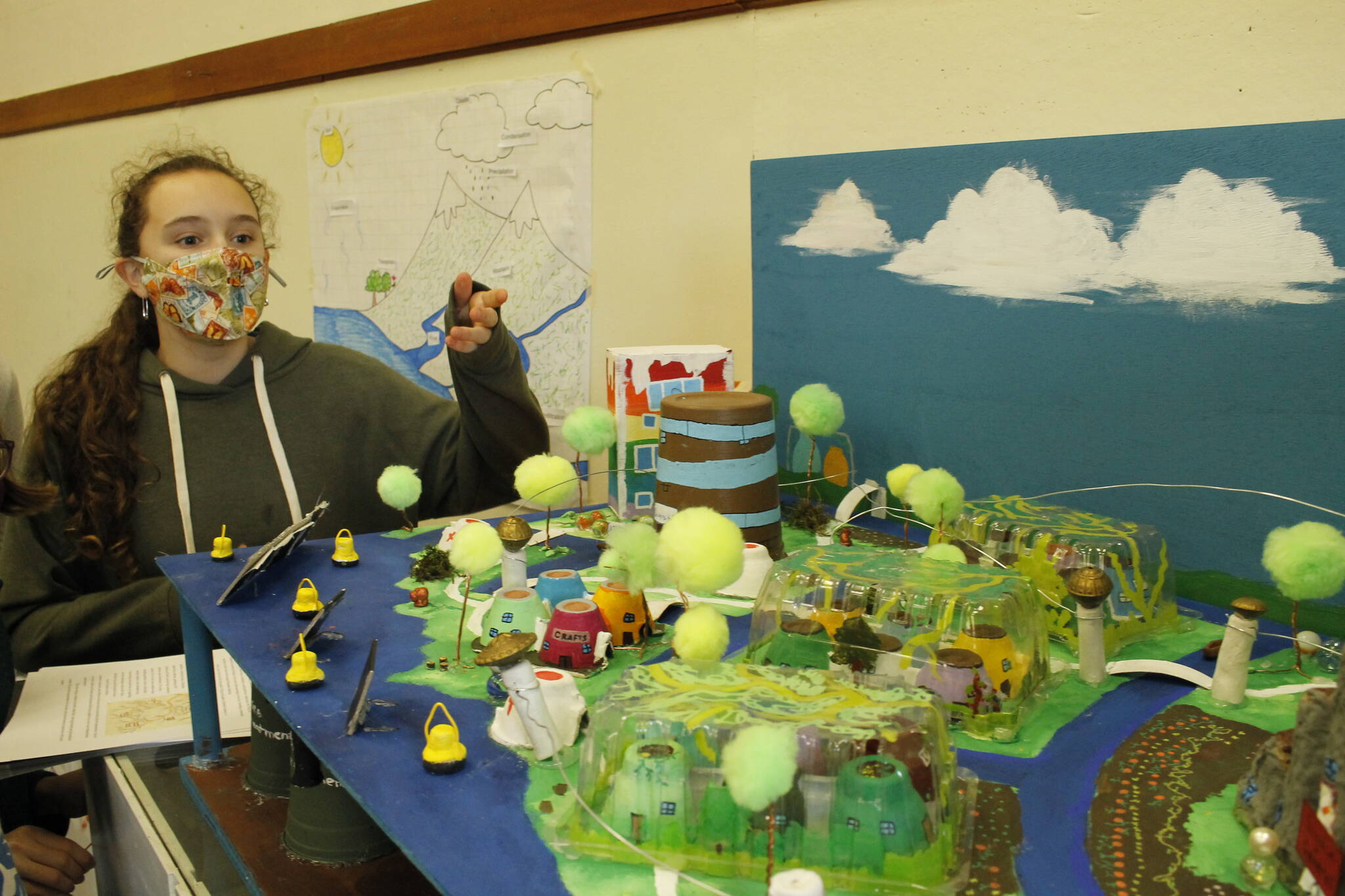Designing eco-friendly cities, clearing invasive plant species and plotting garden beds are just a few of the activities middle school students enrolled in an alternative learning program have been exploring recently.
South Whidbey School District established the ALE program, referred to as the Alternative Learning Experience, last year after parents approached the school district about creating a curriculum less dependent on Zoom and more involved with the natural world.
The program allows greater flexibility for guardians, who can develop individualized learning plans for their children in partnership with a teacher from the school district. The certificated teacher translates the state’s requirements for public education, which in the case of this program can include homeschooling, attending in-person classes, learning from instructors at the South Whidbey Community Center or a mix of all three things.
The program currently has 70 kids enrolled in first through eighth grade. About a third of these students are new to the school district.
Andrew Fersch is one of two teachers in the school district who teaches a core class to ALE students known as “the Expedition.”
His sixth, seventh and eighth grade students have started some ambitious projects that will likely span beyond the semester, which is coming to an end soon.
The goal of the assignments is to connect students to their community, helping them to either understand it better or to improve it, with the assistance of local experts. Fersch said students are also required to speak publicly about their work, which has challenged them academically, socially and emotionally.
“Sharing stuff publicly at this age can be a challenge for people,” he said, “and I think often it’s easier to just excuse people from doing it, but I think it’s one of the most valuable skills that you can have, being able to express your thoughts, feelings.”
Students were eager to share their progress with a Record reporter this week.
For one of their projects, the middle schoolers pitched ideas for beautifying the community center’s courtyard where a large mural was recently painted. They helped write a grant application, which received $3,000, and have been working with a master gardener to plant garden beds for the pocket park.
Sixth grader Carmen Cerda said she reached out to Whidbey Telecom about fixing a defunct pay phone in the courtyard.
“It really helped me realize you can do bigger things than you can imagine,” she said of the pocket park.
Students have also been collaborating on the creation of an ideal waste-free and eco-conscious world as part of an entry for the national Future City competition. They designed a model of a futuristic city, picking a fictional island located in Puget Sound similar to Whidbey Island and naming their city Siyá:m, which means “respect” in the Halq’eméylem language spoken by the Coast Salish people.
The city model is reminiscent of a Dr. Seuss story, with key lime green cotton ball trees and brightly painted structures composed of some unusual items.
“Our goal was to make it out of as many recycled materials as possible, hence the strawberry containers and the egg cartons,” eighth grader Alicia Jenkins said.
The city eliminated the use of cars – even electric ones – and instead opted for gondolas, maglev trains and bikes to reduce carbon emissions.
The students may have the opportunity to enact real-world change. They sent out petitions to community members asking for signatures in support of adding bike lanes on Whidbey. The students also plan to approach the Langley City Council and Island County Board of Commissioners about the issue in the near future.
In addition, the class is in the process of tackling a 180-foot stretch of invasive blackberry bushes behind the community center. Marianne Edain of Frosty Hollow Ecological Restoration has assisted them on this undertaking. From sticks to clippers to machetes to goats, kids have brought their own tools to beat back the non-native plants, which are located in a wetland area.
“I admire the kids and their energy,” Edain said with a laugh.
The class is currently collecting cardboard boxes, which will be used to smother the roots of the invasive plants. The area they need to cover measures approximately 5,400 square feet. Wood chips will eventually be placed over the cardboard and native species of plants will be sown into it.
“Eternal vigilance is the price of no blackberries,” Edain said.
Seventh grader Anja Bentsen said she learned how to measure plot points and gained some knowledge about teamwork, from recording measurements to hauling blackberry brambles.
“Those are values I don’t have, so it was nice to build that skill with my class and teachers,” she said.
Edain has enjoyed being able to get out and work with the students on a regular basis, and she has been “pleasantly surprised” by how knowledgeable and observant the kids are.
“People think of the alternative school as where the leftovers get put,” she said. “No, these are the bunch of kids who are so bright that they’re bored to tears in regular school. This is the bright kid’s challenge class.”



